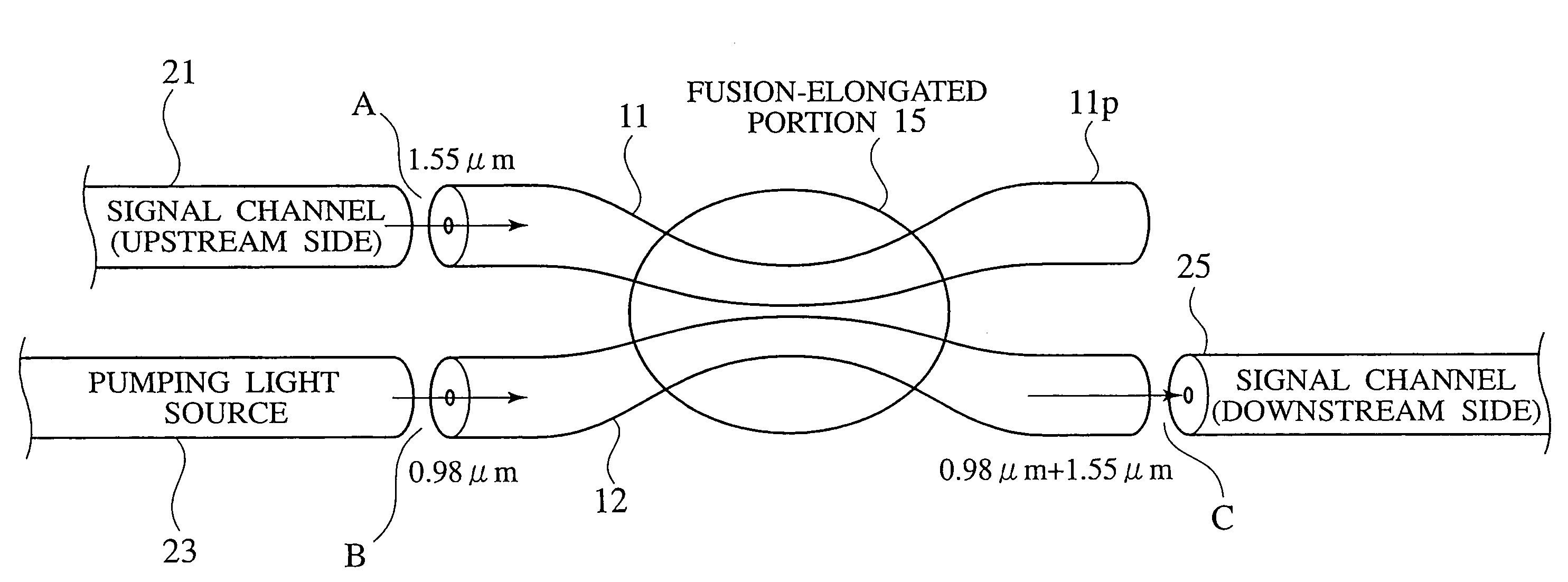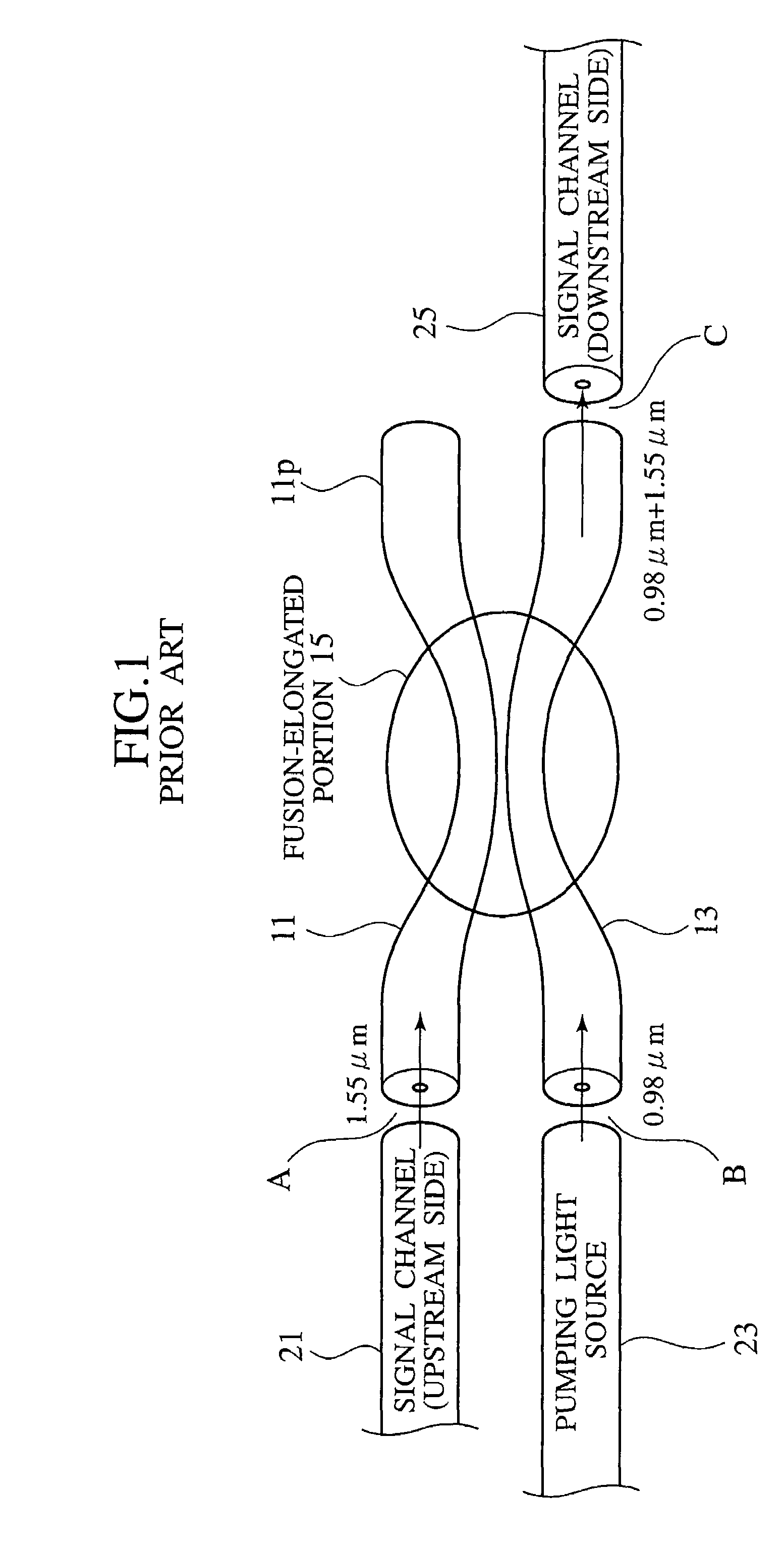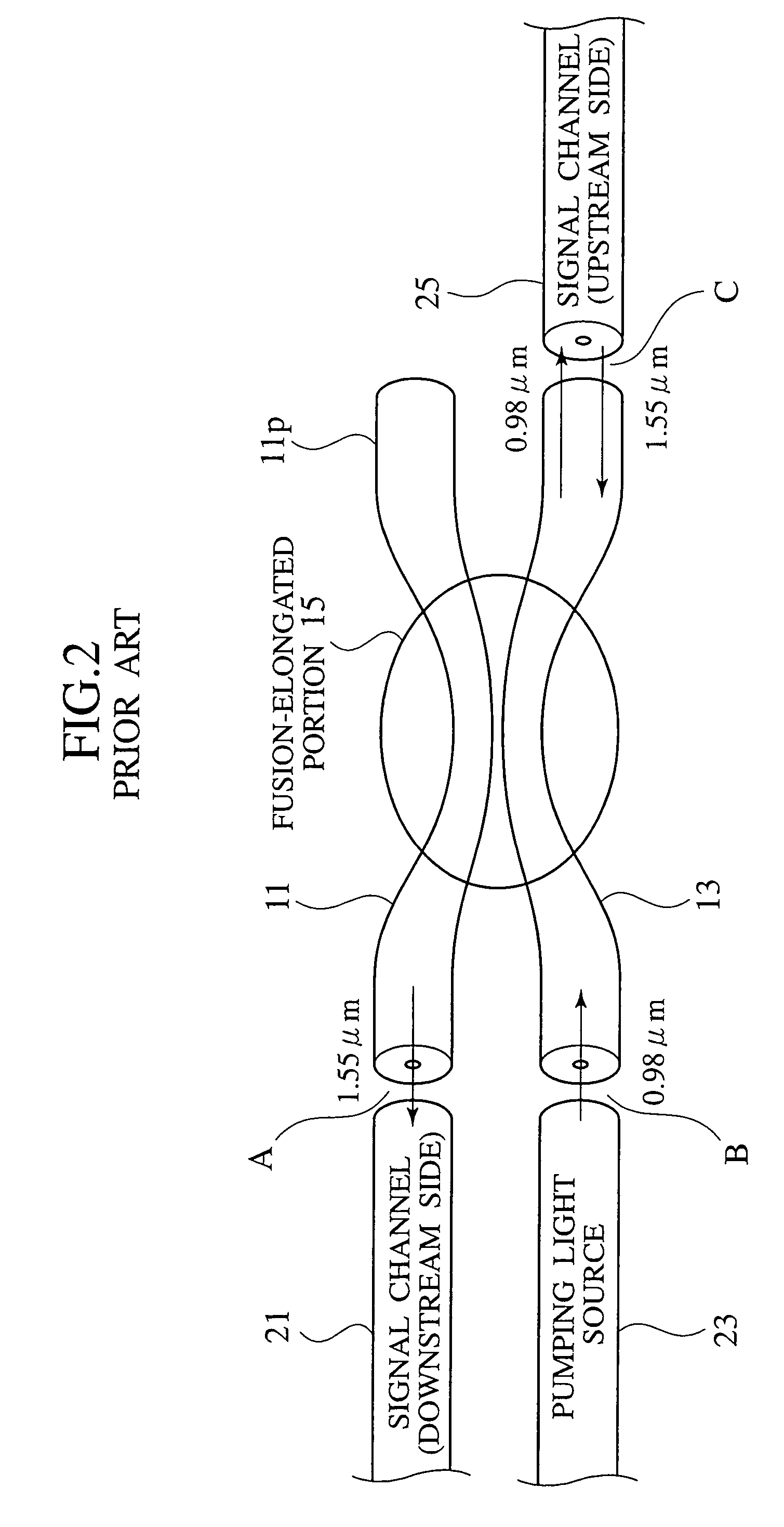Optical fiber coupler and optical fiber therefor
a technology of optical fiber and coupler, applied in the field of optical fiber coupler, can solve the problems of inability to complete coupling and inability to achieve complete coupling, and achieve the effects of superior connectivity, low splicing loss, and superior optical characteristics
- Summary
- Abstract
- Description
- Claims
- Application Information
AI Technical Summary
Benefits of technology
Problems solved by technology
Method used
Image
Examples
first embodiment
[0076]It is sufficient to increase the refractive index of the optical fiber overall, especially the clad to increase the propagation constant β. However due to considerations of the environmental resistance properties and the mechanical reliability of optical fibers, it is preferable that the most external layer of the optical fiber be of pure SiO2 (quartz). If another element is added to adjust the relative refractive-index ratio this generally leads to deterioration in the environmental resistance properties and the mechanical reliability of the optical fiber. Thus, the second core 12b provides a region with a higher refractive index than the cladding 12c around the first core 12a of the 0.98 μm-band optical fiber.[0077](b) First Embodiment for Reduction of Propagation Constant Difference Δβ:
[0078]FIGS. 14 to 17 show elongation ratio dependence of the propagation constant difference Δβ of the 0.98 μm-band optical fiber shown in FIGS. 10 to 13 and the 1.55 μ-band single mode optic...
second embodiment
[0082]Further, it is evident that in the region where the elongation rate is 50% or smaller, in order to make the propagation constant difference Δβ equal to 10−4 rad / μm or smaller, the radius r(2) of the second core is preferably 10 μm or greater and the relative refractive-index difference Δ(2) of the second core 12b and the cladding 12c is preferably 0.1% or smaller. Moreover it is shown that when the relative refractive-index difference Δ(1) of the first core 12a of the 1.55 μm-band optical fiber 11 used for combination with the 0.98 μm-band optical fiber 12 is 0.35%, the relative refractive-index difference Δ(1) of the first core 12a of the 0.98 μm-band optical fiber 12 and the cladding 12c is preferably within the range from 0.7% to 0.9%.[0083](c) Second Embodiment for Reduction of Propagating Constant Difference Δβ:
[0084]FIGS. 18 to 21 show the results of elongation ratio dependence of the propagation constant difference Δβ of the 0.98 μm-band optical fiber shown in FIGS. 10 ...
PUM
 Login to view more
Login to view more Abstract
Description
Claims
Application Information
 Login to view more
Login to view more - R&D Engineer
- R&D Manager
- IP Professional
- Industry Leading Data Capabilities
- Powerful AI technology
- Patent DNA Extraction
Browse by: Latest US Patents, China's latest patents, Technical Efficacy Thesaurus, Application Domain, Technology Topic.
© 2024 PatSnap. All rights reserved.Legal|Privacy policy|Modern Slavery Act Transparency Statement|Sitemap



